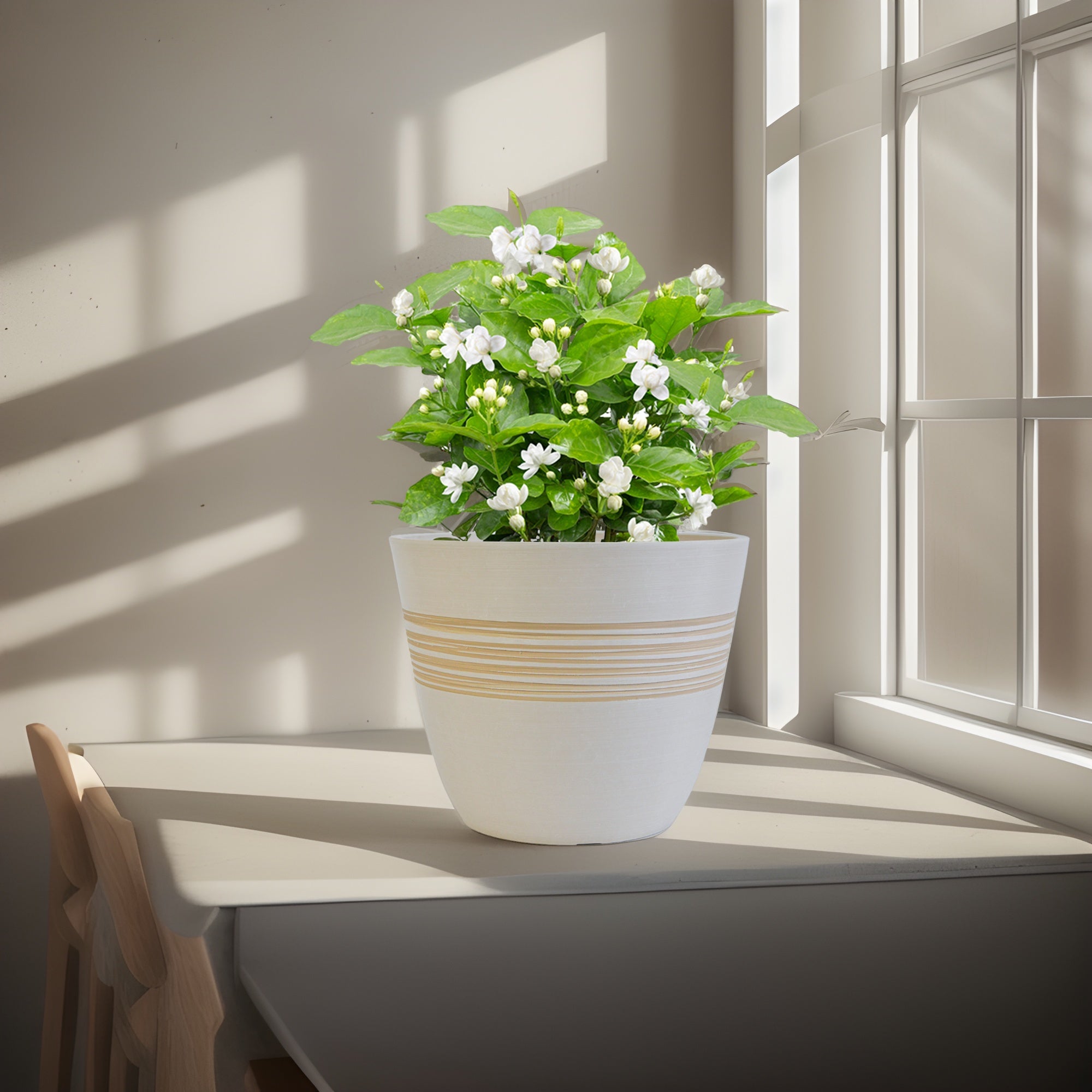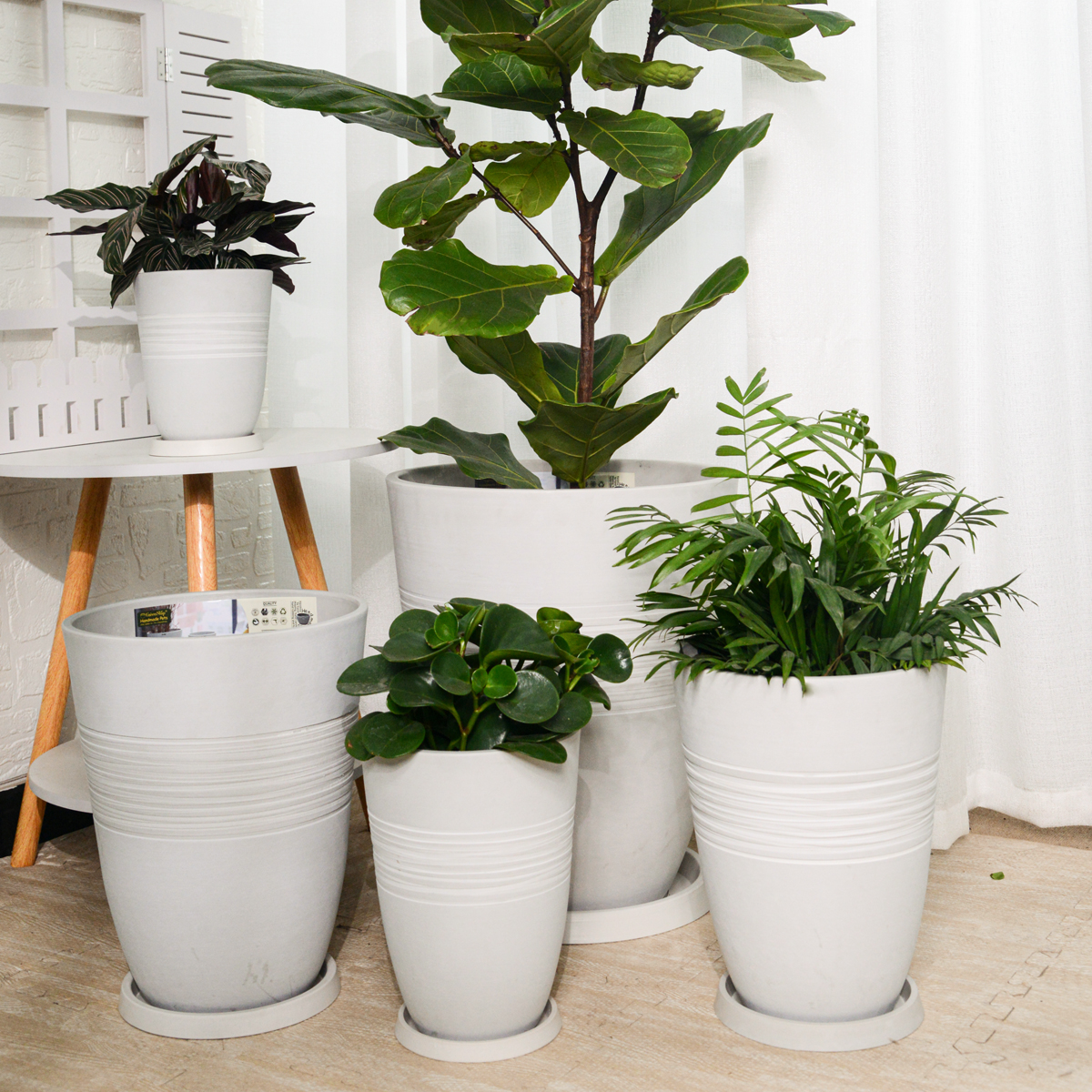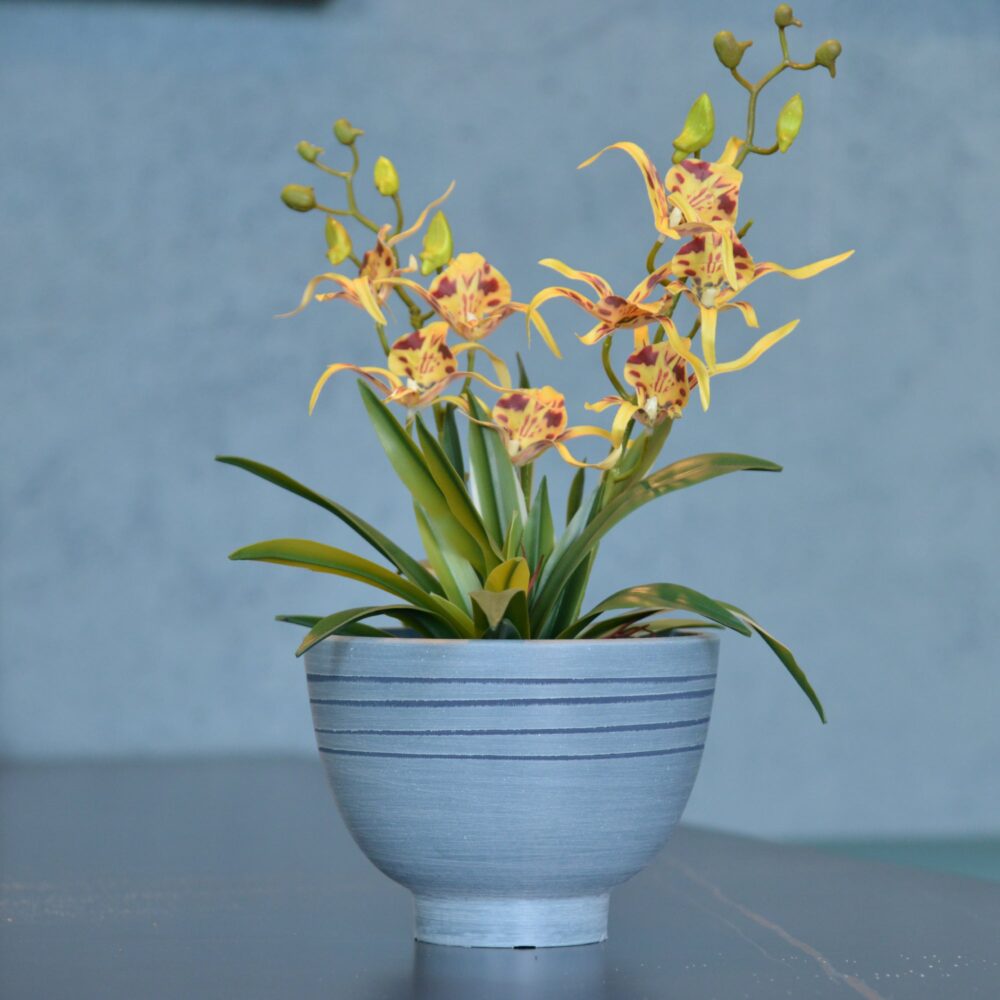Don’t Waste the White “Tears” of the Papaya Tree!
Did you know that besides the delicious papaya fruit, the papaya tree also hides a magical liquid? When you accidentally break a branch or leaf of a papaya tree or scratch the surface of the fruit, a milky white sap will flow out. This seemingly ordinary sap contains amazing gardening value! Many gardening experts are secretly using this natural “panacea” to prevent and control plant diseases and insect pests, and promote healthy plant growth!
That’s right, this magical liquid is papaya tree sap, also known as papaya latex. Today, I will reveal the magical effects of papaya sap in gardening and teach you how to collect and use this natural, environmentally friendly, and money-saving gardening treasure, making your plants less prone to disease, grow stronger, and bear more flowers and fruits!
Nature’s Gift: The Gardening Magic of Papaya Sap
Papaya sap, this milky white liquid, is rich in various active ingredients, giving it amazing effects in the field of gardening:
Natural Fungicide, Inhibits Fungi and Bacteria, Prevents and Controls Plant Diseases
Papaya sap is rich in active enzymes such as latex proteases, chitinases, as well as plant phytochemicals such as alkaloids and phenolic compounds. These components give papaya sap powerful fungicidal and antibacterialcapabilities:
- Broad-Spectrum Fungicide: Papaya sap has obvious inhibitory or killing effects on various plant pathogenic fungi (such as Botrytis cinerea, powdery mildew fungi, anthracnose fungi, etc.) and bacteria (such as soft rot bacteria, leaf spot bacteria, etc.). It can effectively prevent and control plant fungal and bacterial diseases, such as leaf spot, anthracnose, gray mold, powdery mildew, root rot, etc.
- Disrupts Pathogen Cell Walls: Chitinase in papaya sap can decompose chitin, the main component of fungal cell walls, destroying the fungal cell wall structure, leading to fungal cell lysis and death, thereby playing a bactericidal role. Latex proteases and other enzymes may also exert bactericidal effects by disrupting pathogen cell membranes and other mechanisms.
- Induces Plant Disease Resistance: Some components in papaya sap may induce plant disease resistance, activating the plant’s own immune system and improving plant resistance to pathogens, thereby preventing disease occurrence.
- Natural and Safe: Papaya sap is a natural plant extract, non-toxic and harmless to plants, does not produce phytotoxicity, and is safe and reliable to use. It is more environmentally friendly and healthier than chemical fungicides.
Natural Insecticide, Repels and Kills Various Pests, Protects Plants from Infestation
In addition to its fungicidal effects, papaya sap also has the effects of repelling insects and killing insects. Its components such as alkaloids and latex proteases have repellent or toxic effects on various gardening pests:
- Broad-Spectrum Insect Repellent and Insecticide: Papaya sap has repellent or killing effects on various common gardening pests such as aphids, spider mites, whiteflies, thrips, ants, snails, etc. It can effectively prevent and control plant pests and reduce pest damage to plants.
- Interferes with Pest Nervous System: Alkaloids and other components in papaya sap may act on the nervous system of pests, interfering with their nerve signal transmission, leading to paralysis, convulsions, and even death of pests, thereby playing an insecticidal role. Latex proteases and other components may also exert insecticidal effects by disrupting the digestive system of pests and other mechanisms.
- Destroys Pest Eggs: Studies have shown that papaya sap also has a killing effect on the eggs of some pests, which can reduce pest reproduction and control pests from the source.
- Biodegradable, No Residue: Papaya sap is a natural organic matter that is easily biodegradable and will not leave harmful substances in plants and the environment, making it safer and more environmentally friendly than chemical insecticides.
Promotes Wound Healing, Reduces Pathogen Infection, Accelerates Plant Recovery
Papaya sap also has a special effect of promoting wound healing. Its latex component and some active enzymes can accelerate plant wound healing and reduce the risk of pathogen infection:
- Natural Sealing Agent: The latex component in papaya sap, when applied to the plant wound surface, quickly solidifies into a protective film, sealing the wound, preventing water loss, and blocking the invasion of pathogens and pests, acting as a natural wound sealant.
- Promotes Cell Regeneration: Some active components in papaya sap may promote plant cell regeneration and tissue repair, accelerating wound healing. Especially for wounds caused by operations such as pruning, grafting, and cutting, applying papaya sap can improve healing speed and survival rate.
- Reduces Infection Risk: The bactericidal and antibacterial effect of papaya sap can effectively reduce pathogen growth at the wound site and reduce the risk of wound infection, ensuring healthy plant recovery.
- Suitable for Various Wound Types: Papaya sap is suitable for various types of plant wounds, including pruning wounds, grafting wounds, wounds caused by pests and diseases, and mechanical damage, etc.
How to Obtain Papaya Sap: Simple and Easy, Convenient to Collect
Obtaining papaya sap is very simple. Just make a slight cut or scratch on the stems, leaves, fruits and other parts of the papaya tree to collect the flowing milky white sap:
- Select Parts: Stems, branches, petioles, fruits, etc. of the papaya tree all contain latex. You can choose suitable parts for collection according to your needs. Stems and branches have relatively high latex content, and fruits are more convenient to collect, but pay attention to avoid excessive damage to the fruit, affecting fruit quality.
- Cutting or Scratching: Use a clean blade or small knife to gently cut or scratch the epidermis of the selected part. The depth is about 1-2 mm is enough. Avoid excessive cutting to cause tree damage. An inclined angle of the cut is more conducive to sap flow.
- Collect Sap: After cutting, milky white sap will slowly ooze out. Use a clean container (such as glass bottles, plastic bottles, small bowls, etc.) to catch the flowing sap below the cut. The sap flow rate is slow, so be patient. Do not collect too much sap at one time, an appropriate amount is enough to avoid affecting tree growth from excessive collection.
- Collection Time: Collecting sap in the early morning or on cloudy days works better. At this time, the tree is full of water and the sap flow rate is faster. Avoid collecting in high temperature and strong sunlight to prevent excessive water loss from the tree.
- Preservation (Short-term): Collected papaya sap is best used fresh, as active ingredients are easily deactivated. If short-term preservation is needed, you can seal the container and refrigerate it, with a shelf life of about 1-2 days. Long-term preservation is not recommended.
Wonderful Gardening Uses of Papaya Sap: Multi-functional Application, Caring for Plant Health
The collected papaya sap can be used directly or diluted in various gardening scenarios to exert its powerful effects:
Prevent and Control Plant Diseases and Insect Pests: Natural, Safe, and Effective
- Foliar Spray: Directly pour undiluted papaya sap or papaya sap solution diluted 2-3 times (undiluted liquid: water = 1:2 or 1:3) into a sprayer and spray evenly on both the front and back of plant leaves, stems, and branches. Focus on spraying disease and pest-prone parts (such as the back of leaves, new shoots, flower buds, etc.). For prevention, you can spray 1-2 times a week; for treatment, you can spray once every 2-3 days, observe the effect after continuous use for 2-3 times. Dilution ratio and spraying frequencycan be flexibly adjusted according to plant type, disease and pest conditions, environmental conditions, etc. For sensitive plants, it is recommended to dilute before use and conduct a small-scale test.
- Root Watering (Use with Caution): Undiluted papaya sap is not suitable for direct root watering. Excessive concentration may irritate roots. Extremely diluted papaya sap solution (undiluted liquid: water = 1:50 or 1:100) may be tried for root watering to control soil pathogens, but be cautious to avoid excessive concentration and test on a small scale first. Root watering is not the main use of papaya sap. Foliar spraying is a more recommended, safer, and more effective method.
Treat Plant Wounds: Natural Sealing, Promotes Healing
- Pruning Wounds: After plant pruning (such as branch pruning, pinching, leaf removal, etc.), immediately dip a cotton swab or brush in undiluted papaya sap and apply evenly to the plant wound surface to cover the wound and form a protective film. Let it dry, no additional treatment is needed.
- Grafting Wounds: After plant grafting operations, you can also apply undiluted papaya sap around the graft interface to help seal the wound and improve grafting survival rate.
- Other Wounds: For plant wounds caused by pests, diseases, or mechanical damage, you can also treat them by applying papaya sap for disinfection and sterilization and to promote healing.
Seed Soaking and Germination (To Be Verified): Potential Effect, Try with Caution
- Seed Soaking (Low Concentration): Some gardening enthusiasts have tried soaking seeds in extremely diluted papaya sap solution (undiluted liquid: water = 1:100 or more) for a period of time (such as 2-4 hours), believing that it can improve seed germination rate and enhance seedling disease resistance. However, this method lacks sufficient scientific research to confirm. The effect may vary depending on plant type and seed condition. If you want to try, be sure to dilute extremely, excessive concentration may inhibit germination, and test a small batch of seeds first to observe germination before using cautiously. Seed soaking and germination is not the main use of papaya sap and is not recommended as a primary method.
Precautions for Using Papaya Sap:
- Use Freshly Collected Sap to Ensure Activity: Active ingredients in papaya sap are easily deactivated, so it is best used fresh to exert the best effect. If short-term preservation is needed, be sure to refrigerate and use it within 1-2 days. Long-term preservation is not recommended to avoid significantly reduced effects.
- Appropriate Concentration, Avoid Excessive Concentration: Undiluted papaya sap has a high concentration, and direct use may irritate some sensitive plants. For foliar spraying, it is recommended to dilute 2-3 timesbefore use; root watering should be tried with caution after extreme dilution; wound application can use undiluted liquid. Flexibly adjust the concentration according to plant type and purpose of use.
- Avoid Sensitive Periods, Use with Caution: During sensitive periods such as plant seedling stage, flowering period, and hot season, papaya sap should be used with caution. Concentration should not be too high, and spraying frequency should not be too frequent to avoid adverse effects on plants. When using for the first time, test on a small number of plants first, observe the reaction before large-scale use.
- Cannot Replace Comprehensive Care: Papaya sap mainly plays an auxiliary role in preventing and controlling pests and diseases and promoting wound healing, and cannot replace comprehensive care management measures such as watering, fertilization, light, and ventilation. To grow plants healthily, it is also necessary to comprehensively consider various factors and carry out scientific and rational maintenance.
- People with Allergies Should Take Protective Measures: A very small number of people may be allergic to certain components in papaya sap. Contact may cause allergic reactions such as skin itching and redness. People with allergies should wear gloves and other protective equipment when collecting and using papaya sap to avoid direct skin contact.
Frequently Asked Questions:
Question 1: Does the sap of all papaya trees have gardening effects?
Answer: Sap from the papaya (Carica papaya) species is currently the most studied and practiced in gardening applications and has the most clearly defined effects. Sap from some other Carica genus plants (such as Chaenomeles sinensis flowering quince, etc.) may also contain similar components and have certain gardening potential, but research and applications are less, and the effects may not be as stable and significant as papaya sap. It is recommended to prioritize papaya sap to ensure effectiveness. Different varieties and different growth stages of papaya trees may have slight differences in sap composition and activity, but the overall efficacy is basically the same.
Question 2: Are papaya sap and papain (papaya proteinase) in papaya pulp the same thing?
Answer: Both papaya sap and papaya pulp contain papain (papaya proteinase), but their sources, components, and effects are different:
- Different Sources: Papaya sap mainly refers to the milky white sap of the papaya tree, which is mainly present in the trunks, branches, leaves, and conducting vessels and laticifers of fruits. Papaya pulp is the edible part of ripe papaya fruit.
- Component Differences: Papaya sap has higher content of enzymes (such as latex proteases, chitinases) and is richer in plant phytochemicals such as alkaloids and phenolic compounds. It has stronger gardening effects such as sterilization, insecticide, and promotion of wound healing. Papaya pulp has a higher content of papain, which is mainly used for food and medicinal purposes and has effects such as aiding digestion and tenderizing meat. Gardening effects are relatively weak.
- Different Focus of Efficacy: Papaya sap is mainly used in gardening for preventing and controlling plant diseases and insect pests and promoting wound healing. Papaya pulp is mainly used for food and medicinal purposes to provide nutrition and assist in treating diseases. The two cannot replace each other and have different focuses.
Question 3: If fresh papaya sap is not available, can dried papaya or papaya powder be used instead?
Answer: Fresh papaya sap has the highest content of active ingredients and the best effect. Dried papaya or papaya powder are dried products. Enzymes and active ingredients may be partially inactivated or degraded during the drying process, and the efficacy will be greatly reduced. Theoretically, dried papaya or papaya powder may also have certain gardening potential. For example, the extract can be sprayed after soaking or mixed into the soil as organic fertilizer, but the effect may be far less than fresh sap. It is not recommended to use dried papaya or papaya powder to replace fresh papaya sap as the effect is difficult to guarantee. If fresh sap is not available, you can consider using other natural plant-derived fungicides/insecticides, such as garlic water, chili water, neem oil, etc.
Question 4: Can papaya sap be used long-term? Will it produce drug resistance or side effects?
Answer: Papaya sap belongs to natural biopesticides. Long-term use is relatively safe and has fewer side effects. However, long-term single use of the same fungicide/insecticide theoretically has the possibility of pests and pathogens developing drug resistance. To delay the development of drug resistance and improve the control effect, it is recommended to rotate the use of papaya sap and other types of natural or biological pesticides, and avoid long-term single reliance on papaya sap. Rational rotation of pesticides, combined with other comprehensive control measures (such as enhancing plant resistance, improving cultivation environment, etc.) can better protect plant health. Normal and reasonable use of papaya sap at appropriate concentrations and frequencies will not produce obvious side effects on plants themselves. However, excessive or improper use (such as excessively high concentration, use of high concentrations in the seedling stage, etc.) may still cause slight irritation to sensitive plants. Pay attention to usage methods and dosage is sufficient.

Conclusion
Magical papaya sap is a natural treasure gifted by nature to gardening enthusiasts. It combines fungicidal, insecticidal, and healing-promoting effects in one, making it natural, safe, environmentally friendly, and money-saving. Learning to skillfully use this “green elixir” can make your garden plants healthier, less prone to pests and diseases, and grow more vigorously.
Planter for Indoor Outdoor Plants, Set of 2 Modern Decorative Plant Pots with Drainage Hole, Decorative Flower Pots
By greenship-seo|2025-04-10T07:46:01+00:00January 9, 2025|Categories: Hand-carving Series|Tags: Decorative Flower Pots, Self-Watering Pots|
KC2-11VH
By greenship|2024-08-16T06:19:28+00:00August 16, 2024|Categories: Hand-carving Series|
8 inch/10 inch Planter Indoor Plants, 2 Pack Modern Decorative Plant Pots with Drainage Hole, Cute Bowl Shape Flower Pots
By greenship-seo|2025-04-10T08:03:42+00:00January 9, 2025|Categories: Hand-carving Series|Tags: Decorative Flower Pots, Self-Watering Pots|
Modern Plant Pots丨Planter for Indoor Plants,8 inch or 10 inch Plant Pots with Drainage Hole,Decorative Flower Pots
By greenship-seo|2025-04-10T08:32:55+00:00January 7, 2025|Categories: Hand-carving Series|Tags: Decorative Flower Pots, Self-Watering Pots|
KC2-11V
By greenship|2024-08-16T05:39:50+00:00August 16, 2024|Categories: Hand-carving Series|
Modern Plant Pots with Drainage – Indoor & Outdoor Use (6″ Widths)
By greenship-seo|2025-04-10T06:29:43+00:00February 6, 2025|Categories: Hand-carving Series|Tags: Decorative Flower Pots|






